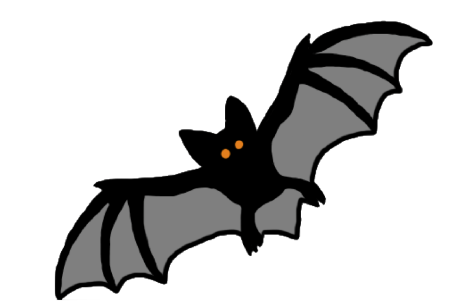Esme’s Animals: Brilliant Bats
October 26, 2020
In honor of spooky season, Mayfield’s Animal Rights Club has chosen for our “Animal of the Month” the quintessential animal that springs into everyone’s mind when they’re decorating for Halloween: BATS!

Bats aren’t the scary shapeshifting Draculas that we’ve been led to believe they are! Our flying vampiric friends are so much more than meets the eye. There are over 1,400 species of bats found in just about every region on earth. They are unique amongst animals, as they are the only flying mammals in the world.
Nearly 70% of bats eat insects, which means that they keep plenty of pests away from our crops. Some bats even eat pollen and nectar, acting as important pollinators for over 300 species of fruit. Only 3 species of bats are vampire bats, so there isn’t as much reason to fear them.
Bats are also known for their methods of echolocation (emitting extremely high-pitched sounds that bounce off objects and prey) to help them navigate through total darkness. In fact, scientists have used what they have studied on bats’ echolocation abilities to create tools for humans, such as military sonar and radar navigation systems and technological devices for blind people. Contrary to popular belief, most bats are not actually blind themselves: bigger bats can actually see better than humans!
There are many issues that threaten the lives of bats, so much so that 24% of bats are considered critically endangered, endangered, or vulnerable. Habitat loss, pesticide use, hunting, and other human activities contribute to the decline of certain bat species.
In North America, bats face a different danger: a fungal disease called White Nose Syndrome. The fungus that causes it, Pseudogymnoascus destructans (Pd), grows on the skin of hibernating bats, causing them to be unusually active and damaging their skin. The fat that the bats have stored then runs out before spring, effectively starving them. Pd can be carried by humans from place to place, which is likely how it got from its place of origin in Europe to here. According to the White Nose Syndrome Response Team, an organization dedicated to researching the disease and conserving bats, it has killed millions of bats since at least 2006. In some habitats, 90-100% of bats have been found dead.
It is important that we take steps to learn more about bats and how to protect them instead of fearing them. If you would like to learn more about what you can do to help (including building a bat house!), visit the White Nose Syndrome Response Team website or the Bat Conservation International website for more information.







